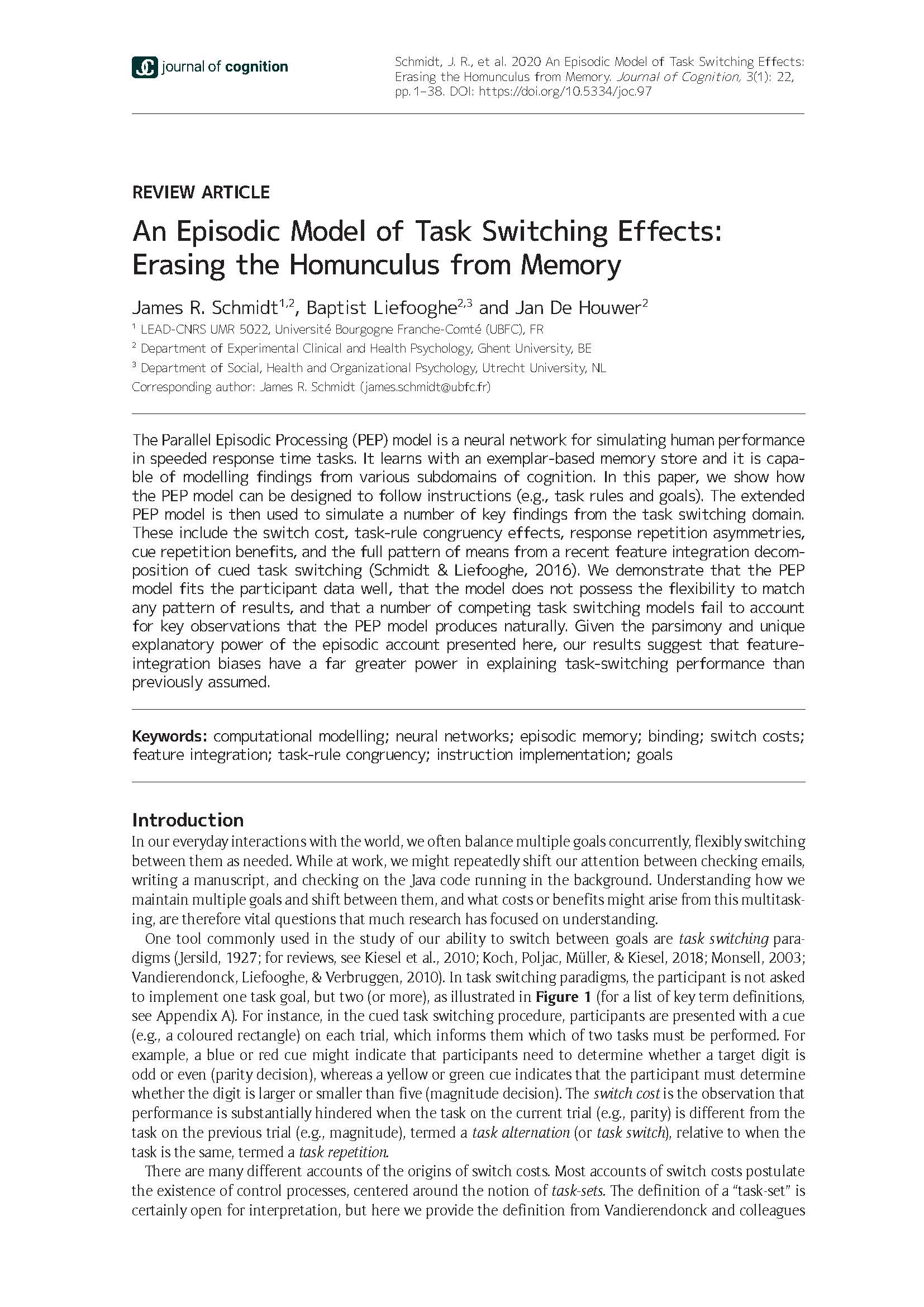The Parallel Episodic Processing (PEP) model is a neural network for simulating human performance in speeded response time tasks. It learns with an exemplar-based memory store and it is capable of modelling findings from various subdomains of cognition. In this paper, we show how the PEP model can be designed to follow instructions (e.g., task rules and goals). The extended PEP model is then used to simulate a number of key findings from the task switching domain. These include the switch cost, task-rule congruency effects, response repetition asymmetries, cue repetition benefits, and the full pattern of means from a recent feature integration decomposition of cued task switching (Schmidt & Liefooghe, 2016). We demonstrate that the PEP model fits the participant data well, that the model does not possess the flexibility to match any pattern of results, and that a number of competing task switching models fail to account for key observations that the PEP model produces naturally. Given the parsimony and unique explanatory power of the episodic account presented here, our results suggest that feature-integration biases have a far greater power in explaining task-switching performance than previously assumed.
An episodic model of task switching effects: Erasing the homunculus from memory
